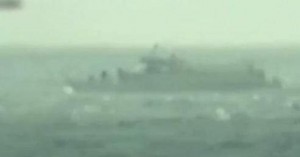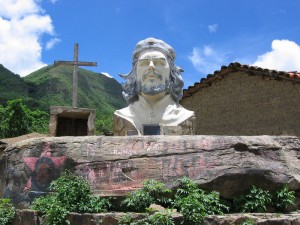Podcast: Play in new window | Download
Updates:
- Ohio Voters Override Restrictions on Collective Bargaining For State Employees
- Arun Gupta On New York Times Panel
- Two Month Anniversary of OWS
- Generators Return to OWS
- National Lawyers Guild – Legal Help Center
- Mic Check Poster with Rick Wolff
—–
US Boat To Gaza Violence November 2011
Earlier this month, two civilian boats destined for the Gaza Strip and carrying medical cargo set sail from Fethiye, Turkey. As many listeners may know, the boats, one Canadian (“Tahrir”) and one Irish (“Saoirse”), carried 27 people–including journalists and crew—from nine different countries were met with a violent take over by Israeli military. The crew of both boats were attacked by high pressure hoses, there was heavy damage. The crew of the Canadian boat were beaten and tasered. Passengers remain in the Givon detention center. President Obama says the passengers are defying Israeli and American law. Past Law and Disorder shows last year’s flotilla. June 7, 2010 / June 21, 2010 / October 2010 / June 13, 2011
- Some are still in prison, the process of getting people out is very opaque. The Israeli courts told them if they wouldn’t sign a false confession, to confess they had entered Israel illegally that they could be held for 2 months in jail. There were 18 people still left in Israeli jail.
- I would like to point out that this is exactly what happens to Palestinians every day.
- There are more than 6 thousand Palestinian political prisoners who go through this same opaque legal process, tortured. 90 percent of the people who have been arrested by the Israelis, Palestinians, have been tortured.
- Forty percent of the male population at one time has been held by the Palestinians for more than a week. We’re talking about a little over 3 million people.
- It’s endemic process its happening to foreigners at this point. The little kids are hit and shouted at and hooded. I think the Israelis taught the Americans.
- The Israelis are regarded as experts in with what they call terrorists.
- These boats were eagerly anticipated in Gaza. Thousands of people came down to the Gaza harbor and hundreds went out on boats hoping to greet the boats.
- Since 2006 Gaza has been under complete siege and blockade, everything that is allowed in is under Israeli control, almost nothing is allowed out.
- There is no economy, without exports, you really can’t have much of an economy. You’ve got 40 percent unemployment. 90 percent of the population is drinking polluted water because the crucial parts of the water treatment plants have not been allowed in by Israel.
- There’s only one reason Israel has been able to maintain this occupation, and that is because the United States abets it.
- There are no consequences for expanding settlements (from the Obama Administration)
- Right now the Israeli government is trying to get the US to attack Iran.
- Instead of Israel being regarded as an out of control, militarized bully is regarded as a close US ally who should determine our foreign policy.
- Endtheoccupation
Guest – Felice Gelman is with the Steering Committee that organized The Gaza Freedom March and has traveled to Gaza twice since the Israeli invasion.
—–
Who Killed Che? How The CIA Got Away With Murder
Co-hosts Michael Smith and Michael Ratner discuss their upcoming book Who Killed Che? A groundbreaking examination based on documents obtained from a Freedom of Information Act requests filed in 1995. This new information helps dispel the stories that the US was not involved with the murder of Che Guevara. Morning Star Review
“Ratner and Smith cut through the lies and distortions to provide a riveting and thoroughly documented history of the murder of Che Guevara. In an era when ‘targeted assassinations’ and ‘capture and kill operations’ have become routine, and are routinely glorified by the mainstream U.S. press, their examination of the U.S. role in Che Guevara’s death could not be more timely.” —Amy Goodman, host and executive producer, Democracy Now.
Michael Ratner / Michael Smith:
- One day when I was a baby I filed a Freedom of Information Act request for all the documents the FBI and the CIA had about Che Guevara.
- You and I had received the first documents 15 years ago and we wrote the first book Che Guevara and the FBI
- Ten or twelve years later I get another document drop from the CIA and these are the documents that are the most important in my view, relating to Che’s killing in Bolivia.
- The government had changed in Bolivia since 1819, 189 times.
- The book tells his story in Bolivia, and what the US did starting the counter intelligence process against him and supported the Bolivian government.
- Michael and I enjoyed working on it because we got to really know Che in a way we haven’t before.
- This book had its origin first in a document drop that was about Che’s murder and Che’s time in Bolivia. There are maps we put in the book of the last battles, where he was captured.
- The idea of the book really came from Michael Smith.
- A lot of people bought the story that was put out by the CIA agent on the ground.
- We demonstrate that the US was deeply involved in his murder.
- Ricardo Alarcon who is the president of the Cuban National Assembly, wrote the introduction to our book.
- During the Cuban Revolution, it was the Bastista troops that killed tens of thousand of revolutionaries.
- The book follows Che when he’s in Africa and various places, but then we have him going to Bolivia on November 5, 1966.
- There was a split between Che and Fidel. Fidel was worried about Che every single day.
- The first half of the book is a 25 thousand word essay by Michael Smith and Michael Ratner. It links together what happened with Che once he left Cuba.
- It’s also a biography of the US counterinsurgency program and the characters in that program that tried to make sure they would stop the Cuban revolution from spreading to other countries.
- We dedicated this book to our friend, the great movement attorney Len Weinglass. Len was the attorney for the Cuban Five.
- The Cuban Five are an important part of this story, 44 years after Che’s death.
- The US has attempted to completely destroy Cuba, and squeeze it so it could not carry out the social and economic reforms that really would’ve made it a shining example for the world.
Hosts – Michael Steven Smith is the author, editor, and co-editor of six books, mostly recently “The Emerging Police State,” by William M. Kunstler. He has testified before committees of the United States Congress and the United Nations on human rights issues. Mr. Smith lives and practices law in New York City with his wife Debby, where on behalf of seriously injured persons he sues insurance companies and occasionally the New York City Police Department. Michael Smith also organizes and chairs the Left Forum. Check out Michael’s blog here.
Host- Michael Ratner NewYork civil-rights lawyer Michael Ratner was in the U.S. Supreme Court yesterday,flanked by the mother of one of the Guantánamo detainees he has represented for the past two years, unsure what to expect. After an hour, he was pleasantly surprised. First, Sandra Day O’Connor, and then Justices Souter, Breyer, Kennedy and even Scalia, indicated through their questions that they were skeptical of the government’s argument that the men Defense Secretary Donald Rumsfeld calls “the worst of the worst” have no legal right to file habeas corpus petitions in U.S. courts.
—————————————————



